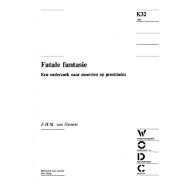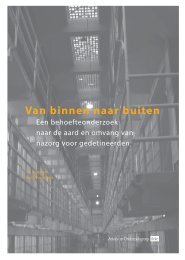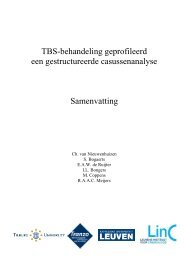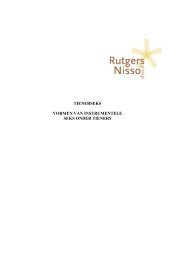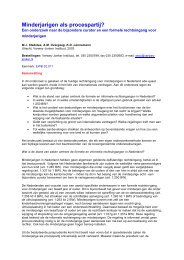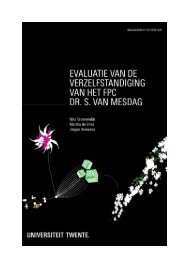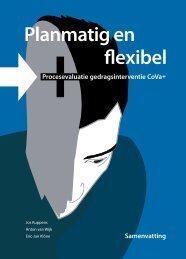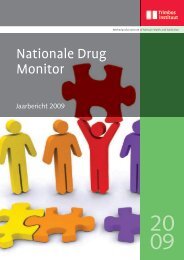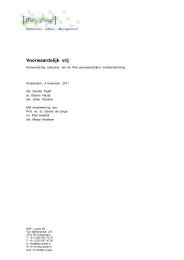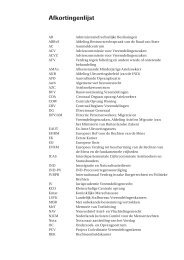Procesevaluatie observatieafdelingen Teylingereind - WODC
Procesevaluatie observatieafdelingen Teylingereind - WODC
Procesevaluatie observatieafdelingen Teylingereind - WODC
Create successful ePaper yourself
Turn your PDF publications into a flip-book with our unique Google optimized e-Paper software.
A comparison of the clinical reports of the observation units with the clinical reports<br />
of the comparison group revealed considerable similarity. The differences between the two<br />
types of report were mainly found, as expected, in respect of the ‘behaviour in the living unit’,<br />
‘school’ and ‘art therapy’ paragraphs. These topics are not part of ambulatory diagnostics.<br />
The differences (except for art therapy, as it is not available in any of the other types of<br />
diagnostic setting) became smaller when only cases of residential and clinical diagnostics<br />
were included in the comparison group. Nevertheless, the differences remain substantial.<br />
Interviews with the staff of the observation units and the users of the reports show that from<br />
their point of view the information gathered in these areas is not always sufficiently integrated<br />
in the final report or is not considered in the advice.<br />
The juveniles and their parents had a neutral or positive opinion of the observation<br />
units. It is noteworthy that a relatively large number of the adolescents had the impression that<br />
some behaviours were elicited because observers tried to trigger behaviour. They found this<br />
uncomfortable. Indeed according to one young man it led to dangerous situations. In addition,<br />
the timing of the presentation of the outcome of the investigation and the advice to be given to<br />
the court to the individual concerned may lead to youngsters feeling insufficiently informed.<br />
In phase 2 of the process evaluation it was found that (a) the teacher, clinical social<br />
worker and psychiatrist in particular do not report transparently; (b) compliance with the<br />
‘observation and report’ protocol is fairly good during the multidisciplinary meetings, but<br />
significantly lower in the weeks in between; (c) some items are structurally not carried out or<br />
not carried out on time, either because of changes in the appointments and/or because<br />
adolescents refuse to cooperate; (d) compliance with the report protocol is good at a general<br />
level, but fluctuates strongly at content level; (e) no specific observation method has been<br />
developed for either unit, although the goals of the diagnostic units are different (decision vs.<br />
treatment), (f) the observations are mostly participatory in nature and steered by incidents; the<br />
reports are retrospective, (g) the clinical reports of the observation units are in general<br />
comparable to the ambulatory reports, (h) staff, adolescents and their parents have in general a<br />
neutral to fairly positive view on the observation units.<br />
Phase 3 focuses on the experiences of the users of the reports and the follow-up stage. The<br />
users of the reports are positive about the form (clarity, readability, comprehensibility) of the<br />
reports. They all think that the observation units can be of added value for the youth forensic<br />
field. However, the practitioners questioned the added value of the unit for treatment and PIJ<br />
prolongation, as it functioned before its temporary closure. Nevertheless, they accepted the<br />
treatment advice given in the reports.<br />
17



